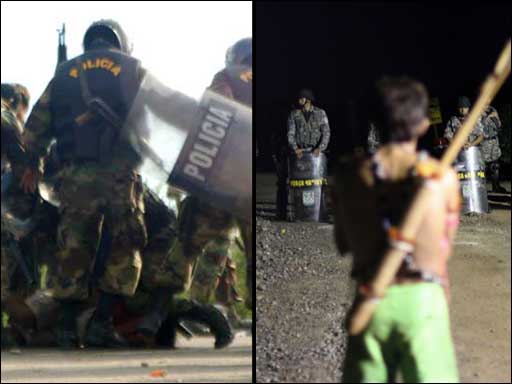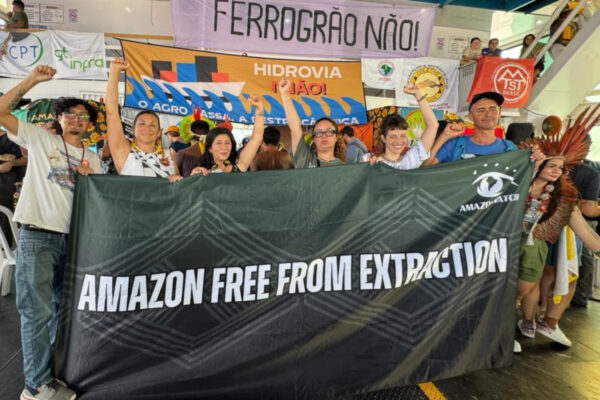
The Amazon is no stranger to violence. But modern democratic governments are supposed to reduce violence through law enforcement and peaceful means of conflict resolution. What do we do, however, when a state provokes widespread social unrest and then threatens to use force to quell legitimate protests?
Today – June 5th – is the fourth anniversary of one such “massacre foretold” in Peru. The word “Bagua” has become synonymous with a familiar pattern of problematic “development” plans imposed by governments, grassroots protests against them, and violent repression being used as the key means to handle the issue.
Indigenous protests across the Peruvian Amazon were sparked in early 2009 by executive orders designed to enable the Peru–U.S. free trade agreement (FTA). These new laws weakened indigenous rights protections in favor of foreign investors. The broad-based mobilization also reflected a much deeper frustration with innumerable years of discrimination and brutality. Discounting this, the government responded by sending out the troops. Their mission was obvious – intimidate the protesters into standing down.
As the tensions mounted, Amazon Watch and allies worked to help publicize the reasonable claims of our indigenous colleagues. We encouraged international media to cover the protests. We raised our concerns with U.S. government officials related to implementation of the FTA. We even organized a solidarity protests in New York, out front of the Peruvian mission to the United Nations, during the week of the annual forum for indigenous issues.
In the end, our furious efforts at violence prevention proved futile. The government of President Alan Garcia, at the highest levels, decided to crack down on the roadblock near Bagua, even though the group had stated their intention to demobilize later that morning. This turned out to be a colossal mistake, resulting in 33 deaths and unforeseen political backlash blaming the government for a situation grossly mishandled. We hammered that message home amongst the international community through protests, widespread media outreach, and high-level advocacy.
Bagua to Belo Monte
This past week, we worried about a similar scenario at the site of the extremely controversial Belo Monte dam in the heart of the Brazilian Amazon. Waves of protests and indigenous occupations have disrupted the gargantuan construction site over the last year. The Brazilian government’s response has been to coopt social and indigenous leaders with money, criminalize those who continue to resist, and militarize the region. The Mundurukú warriors who led the latest protest, however, were unwavering in their resolve.
Their incorruptible posture came out loud and clear in the series of letters they published and we helped publicize. They ripped up a judicial order to voluntarily leave the construction site, the deadline for which came and went. But a wave of anxiety shot through the protesters last Thursday with the news that the Brazilian Federal Police had killed an indigenous Terena man in the course of a brutal eviction action in southern Brazil. That same day, Valdenir Mundurukú raised the question, “We know they killed one of our relatives in Mato Grosso do Sul today, is that what they will do here?”
Counterbalancing the real threat of state repression was a well-coordinated network of Brazilian and international allies. Physically accompanying the protest were journalists and human rights lawyers. Through real-time communication, Amazon Watch received the latest information and passed it along to international media outlets and a concerned public. Compelling images of the occupation went viral on social media and thousands of emails were sent to Brazilian authorities through an on-line action alert.
Yesterday the group of protesters was flown from Belo Monte to Brasilia, the seat of government, and held a four-hour meeting with various Ministers and President Rousseff’s chief of staff. The government representatives stated that their plans to impose mega-dams across indigenous territory will stay on course. The indigenous protesters vowed to maintain their resistance to the government’s dam-building agenda that threatens to destroy their ancestral lands. In short, a short-term crisis was averted, but the fundamental conflict will simmer into the future. Your solidarity will again be necessary very soon.














